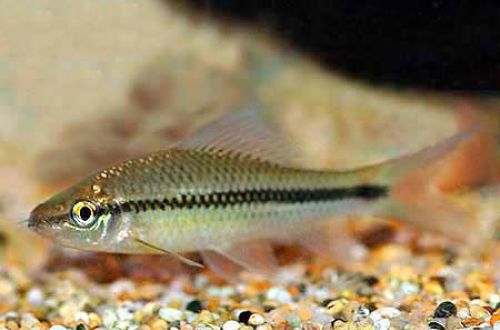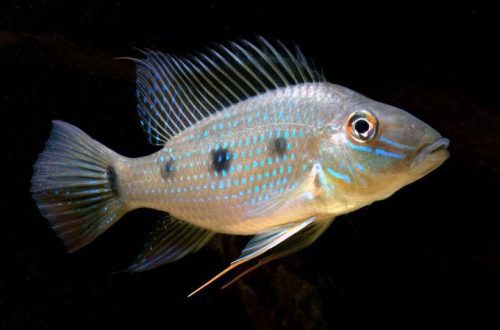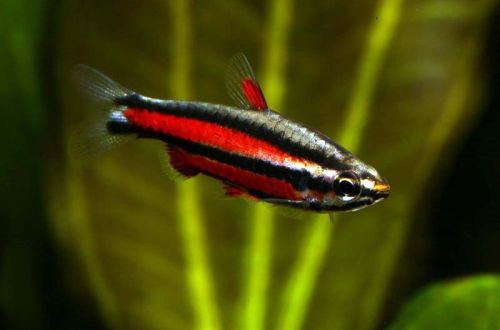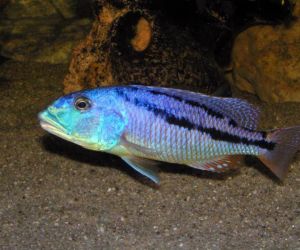
Osteohilus
Osteochilus microcephalus, scientific name Osteochilus microcephalus, belongs to the family Cyprinidae (Cyprinidae). The fish is native to Southeast Asia. The natural habitat extends over vast expanses from Thailand to the islands of Indonesia. It is found everywhere, both in fast mountain rivers and in stagnant swampy reservoirs. During the rainy season, it swims to flooded areas of tropical forests.

In Europe and America, it is rarely found in home aquariums. In Asian countries, it is better known among local residents as a popular small commercial species from which fish sauce or pasta is made.
Description
Adults reach up to 25 cm in length. Depending on the lighting, the color can vary from gray to yellow with metallic tints. A characteristic feature of the body pattern is a black stripe stretching from head to tail. Fins are reddish.
Behavior and Compatibility
Peaceful moving fish. Prefers to be in a small group of 4-5 individuals. Compatible with many other calm species of comparable size.
Brief information:
- The volume of the aquarium – from 350 liters.
- Temperature – 22-28°C
- Value pH — 6.0–7.5
- Water hardness – up to 20 dGH
- Substrate type – any
- Lighting – subdued
- Brackish water – no
- Water movement – light or moderate
- The size of the fish is up to 25 cm.
- Food – any sinking food
- Temperament – peaceful calm fish
- Keeping in a group of 4-5 individuals
Maintenance and care, arrangement of the aquarium
Given the possible maximum size of Osteochilus microcephalus, keeping a small flock will require an aquarium of 350–400 liters. In the design, it is recommended to provide places for shelters from natural snags and thickets of plants and open spaces for swimming. The lighting is subdued or moderate. In bright light, they prefer to hide in shelters. Floating plants can be used for shading.
Soft slightly acidic water is considered the optimal environment. A small concentration of dissolved tannins is acceptable, the source of which will be natural snags, as well as the leaves of some trees. More details in a separate article “The leaves of which trees can be used in an aquarium.”
Maintenance is standard and consists of the following minimum set of mandatory actions: weekly replacement of part of the water with fresh water, removal of organic waste, cleaning of glass and design elements, equipment maintenance.
Food
Omnivorous species. Will accept most popular foods designed for feeding aquarium fish. It is desirable to use sinking products, such as dry flakes or granules with a high content of plant components.





